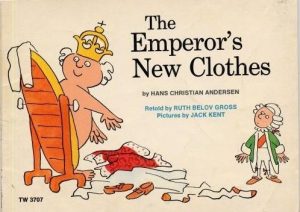 You may remember the fable of the emperor’s new clothes by Hans Christian Andersen. The emperor is convinced to wear fine “clothes” that can only be seen by those of noble birth. His officials, not wanting to be accused of being anything other than nobility, keep the game going as they fawn over the new wardrobe that they can’t see. Only during a grand parade, when an innocent young boy shouts, “The emperor is naked,” does the charade come to an embarrassing end.
In an era when we have more tools than ever for gathering information and making decisions, we seem to have many naked emperors in leadership roles. An increasing body of research points out that we are not nearly as rationale as we think we are. In addition, society pushes us more and more into small huddles of like-minded people.
Leadership of a church or ministry or non-profit is a complex undertaking. There aren’t any steps you can take to guarantee success. But here are 4 steps that could keep you from an embarrassing public display!
You may remember the fable of the emperor’s new clothes by Hans Christian Andersen. The emperor is convinced to wear fine “clothes” that can only be seen by those of noble birth. His officials, not wanting to be accused of being anything other than nobility, keep the game going as they fawn over the new wardrobe that they can’t see. Only during a grand parade, when an innocent young boy shouts, “The emperor is naked,” does the charade come to an embarrassing end.
In an era when we have more tools than ever for gathering information and making decisions, we seem to have many naked emperors in leadership roles. An increasing body of research points out that we are not nearly as rationale as we think we are. In addition, society pushes us more and more into small huddles of like-minded people.
Leadership of a church or ministry or non-profit is a complex undertaking. There aren’t any steps you can take to guarantee success. But here are 4 steps that could keep you from an embarrassing public display!
- Ask what you’re not seeing. A simple acknowledgment that you don’t know everything and don’t have all the answers is a great starting point. Rather than leading with decisions and directives, begin with questions.
- Intentionally include people with different perspectives. Every leader must wrestle with the temptation to fill the inner circle with supportive people who think the same way. Doing so has the apparent benefit of quicker decisions and a more pleasant team environment. It also greatly increases the risk of making a major, avoidable mistake.
- Beware of power differentials. Those in the lead role need to be especially careful of the power that comes with their position and the ways this can squelch healthy debate. If you think, “we’re all equals around the table,” that probably shows how unaware you are of power differentials.
- “Mine for conflict.” This is one of my favorite expressions from Patrick Lencioni’s work. It means intentionally drawing out opposing viewpoints. If a team seems to reach a consensus too quickly, the leader can “mine for conflict” by inviting a quiet person to speak up or postponing the final decision until more dissenting ideas have been expressed.



